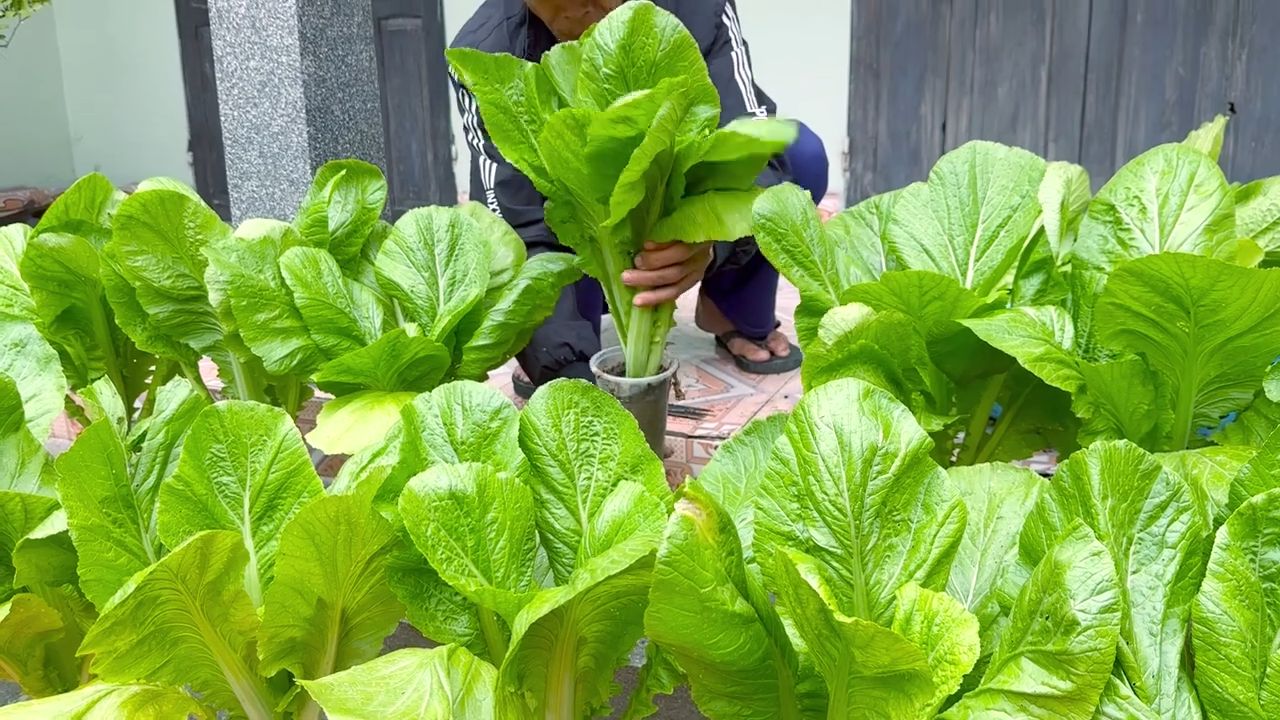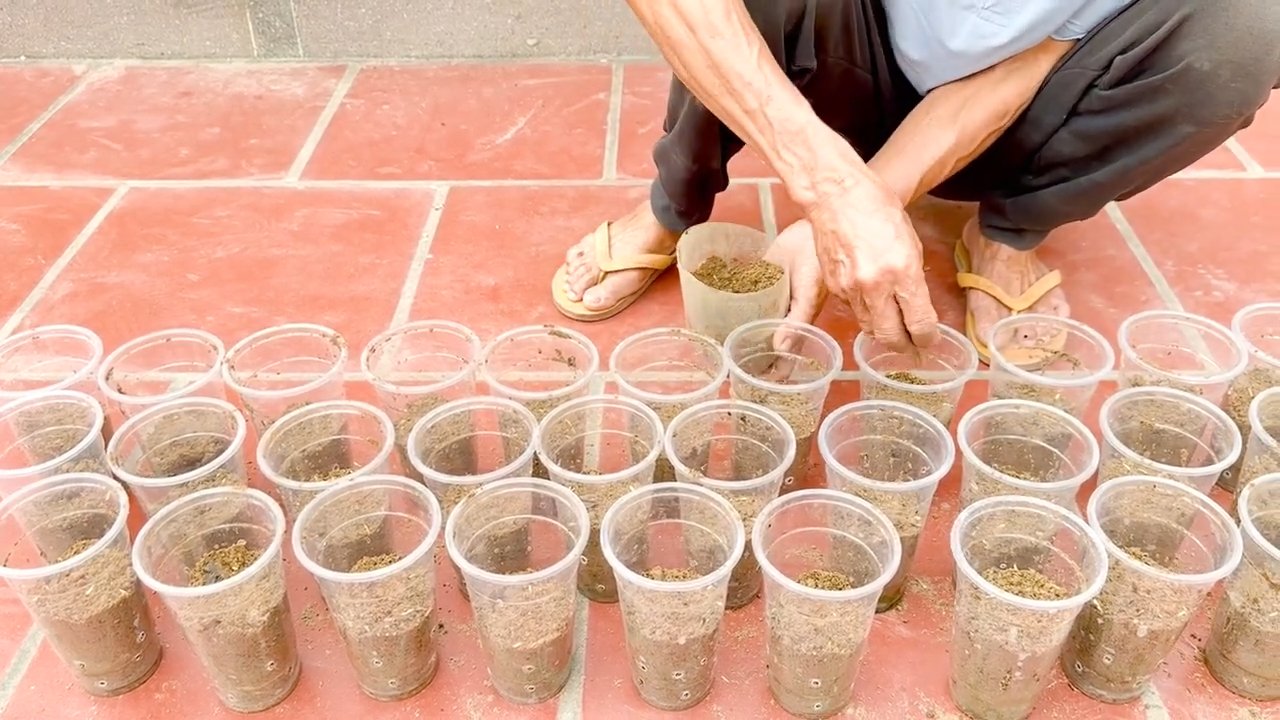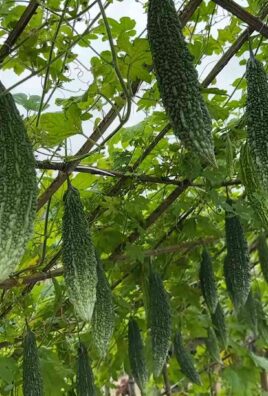Easy vegetable gardening – the words alone conjure images of sun-ripened tomatoes, crisp lettuce, and the satisfaction of harvesting your own food. But the thought of starting a vegetable garden can also feel overwhelming, right? Trust me, I get it! We’ve all seen those picture-perfect gardens and wondered if we could ever achieve the same. But what if I told you that growing your own delicious, healthy vegetables doesn’t have to be a daunting task?
For centuries, humans have cultivated their own food, from ancient kitchen gardens to the victory gardens of wartime. This connection to the earth is deeply ingrained in our history. Today, with concerns about food security and the desire for healthier, more sustainable living, easy vegetable gardening is experiencing a major resurgence.
This DIY guide is designed to break down the barriers and empower you to create your own thriving vegetable patch, no matter how small your space or how limited your experience. I’m going to share some simple yet effective tricks and hacks that will transform you from a gardening novice into a confident grower. Forget complicated techniques and expensive equipment. We’re focusing on practical, budget-friendly solutions that will have you enjoying fresh, homegrown vegetables in no time. So, grab your gardening gloves, and let’s get started!

Vegetable Garden Made Easy: Your DIY Guide for Beginners
Hey garden friends! Have you always dreamed of growing your own tomatoes, cucumbers, and herbs? I can tell you, it’s not as hard as you might think! In this article, I’ll show you how to create a vegetable garden with simple means, which will provide you with fresh vegetables and at the same time bring you a lot of joy. Don’t worry, even if you are an absolute beginner, with these instructions, it’s guaranteed to work!
What you need for your vegetable garden:
- The right location: Look for a sunny spot that gets at least 6 hours of sun a day. This is super important for the growth of your plants.
- Good soil: Vegetables need nutrient-rich soil. If your garden soil isn’t great, you can improve it with compost or special vegetable soil.
- Vegetable seeds or young plants: For starters, I recommend young plants because they are a bit more robust. But seeds are, of course, cheaper and there is a larger selection.
- Watering can or garden hose: Your plants need regular water, especially on hot days.
- Gardening tools: A shovel, a rake, and a small hoe are the most important tools to begin with.
- Plant labels: So you don’t forget what’s growing where!
- (Optional) Raised bed: A raised bed is great if you have back problems or the soil in your garden isn’t very good.
- (Optional) Mulch material: Mulch helps to retain moisture in the soil and suppress weeds.
Step-by-Step Guide: How to Create Your Vegetable Garden
1. Select and Prepare the Location
- Find a sunny spot: As mentioned, vegetables need a lot of sun. Make sure the spot is not shaded by trees or buildings.
- Prepare the soil: Remove grass, weeds, and stones from the area. Loosen the soil with a shovel and remove larger clumps.
- Improve the soil: If the soil is sandy or loamy, mix in compost or vegetable soil. This improves the structure and nutrient content.
- (Optional) Build or set up a raised bed: If you decide on a raised bed, you can build or set it up now. Fill it with a mixture of coarse material (e.g., branches), compost, and soil.
2. Select and Plan the Plants
- Choose your vegetables: Think about which vegetables you like to eat and which grow well in your region. For beginners, tomatoes, cucumbers, lettuce, radishes, zucchini, and herbs like basil and parsley are well-suited.
- Create a planting plan: Plan where you want to plant which vegetables. Pay attention to the needs of the plants. For example, tomatoes need a lot of space, while radishes can be sown between other plants. Also, consider crop rotation to not unilaterally strain the soil.
- Buy young plants or seeds: Get the plants or seeds you need for your vegetable garden. Look for good quality and choose varieties that are resistant to diseases.
3. Planting or Sowing
- Prepare the plants: If you have young plants, water them thoroughly before planting.
- Dig planting holes: Dig holes that are slightly larger than the root balls of the plants.
- Insert the plants: Carefully place the plants in the holes and fill them with soil. Press the soil down lightly.
- Sow seeds: If you are using seeds, follow the instructions on the package. Sow the seeds at the correct depth and with the correct spacing.
- Water: Water the plants or seeds thoroughly after planting or sowing.
4. Caring for the Vegetable Garden
- Water regularly: Vegetables need regular water, especially on hot days. It’s best to water early in the morning or late in the evening to avoid evaporation.
- Weed: Regularly remove weeds so they don’t take nutrients away from your plants.
- Fertilize: Fertilize your plants regularly with organic fertilizer or compost. This ensures healthy growth and a bountiful harvest.
- Control pests: Watch out for pests like slugs, aphids, or caterpillars. Combat them with natural means, e.g., with nettle tea or beneficial insects.
- Mulch: Cover the soil around your plants with mulch material like straw, wood chips, or grass clippings. This helps to retain moisture in the soil and suppress weeds.
Special Tips for Specific Vegetable Varieties
Tomatoes
- Support: Tomatoes need support, e.g., a stake or a trellis.
- Pruning suckers: Regularly remove the side shoots (suckers) so the tomato plant puts its energy into the fruit.
- Rain protection: Tomatoes are susceptible to late blight. A rain cover can help keep the plants dry.
Cucumbers
- Trellis: Cucumbers need a trellis, e.g., a wire mesh or a fence.
- Harvest regularly: Harvest the cucumbers regularly so the plant produces new fruits.
Lettuce
- Shade: Lettuce doesn’t like it too hot. Plant it in a semi-shady spot or protect it from the midday sun.
- Water regularly: Lettuce needs a lot of water, especially on hot days.
Radishes
- Fast-growing: Radishes grow very quickly. You can harvest them after just a few weeks.
- Don’t sow too densely: Don’t sow radishes too densely so they have enough space to grow.
Zucchini
- Lots of space: Zucchini need a lot of space. Plan them with sufficient distance to other plants.
- Harvest regularly: Harvest the zucchini regularly so the plant produces new fruits.
Avoiding Common Mistakes
- Too little sun: Vegetables need a lot of sun. Make sure the location gets at least 6 hours of sun a day.
- Poor soil: Vegetables need nutrient-rich soil. Improve the soil with compost or vegetable soil.
- Too little water: Vegetables need regular water, especially on hot days.
- Neglecting weeds: Regularly remove weeds so they don’t take nutrients away from your plants.
- Ignoring pests: Watch out for pests and combat them in a timely manner.
Additional Tips for a Successful Vegetable Garden
- Observe your plants: Pay attention to changes in the appearance or growth of your plants. This can be a sign of diseases or pests.
- Keep learning: There are many books, magazines, and websites that provide you with information and tips about vegetable gardening.
- Exchange experiences: Talk to other gardeners about your experiences and learn from each other.
- Be patient: Not everything works out right away. Don’t be discouraged and learn from your mistakes.
- Have fun: The most important thing is that you have fun gardening!
I hope this guide helps you create your own vegetable garden. It’s a great feeling to harvest your own vegetables and know where they come from. Good luck and have fun gardening

Conclusion
So, there you have it! Transforming your outdoor space into a thriving, bountiful, and easy vegetable garden is not only achievable but incredibly rewarding. We’ve explored simple yet effective techniques that empower even the most novice gardener to cultivate their own fresh produce. From selecting the right location and preparing the soil to choosing easy-to-grow vegetables and implementing smart watering strategies, every step is designed to minimize effort and maximize yield.
Why is this DIY approach a must-try? Because it puts you in control of your food source. You know exactly what goes into your vegetables – no harmful pesticides, no mysterious additives, just pure, homegrown goodness. Beyond the health benefits, gardening is a fantastic stress reliever. The simple act of nurturing plants, watching them grow, and harvesting your own food connects you to nature in a profound way. Plus, there’s nothing quite like the taste of a freshly picked tomato or the satisfaction of serving a salad made entirely from your own garden.
But the journey doesn’t end here! Feel free to experiment and adapt these techniques to suit your specific needs and preferences. Consider companion planting to naturally deter pests and improve growth. Try vertical gardening if you’re short on space. Explore different varieties of vegetables to discover your favorites. You could even build a simple raised bed for easier access and better drainage.
Don’t be afraid to get your hands dirty and embrace the learning process. Every garden is unique, and every gardener has their own style. The most important thing is to start, to experiment, and to enjoy the process.
We are confident that with a little planning and effort, you can create an easy vegetable garden that provides you with fresh, healthy food and a sense of accomplishment. We encourage you to take the plunge and experience the joys of homegrown produce.
And most importantly, we want to hear about your experiences! Share your successes, your challenges, and your tips in the comments below. Let’s build a community of gardeners who are passionate about growing their own food and sharing their knowledge with others. Your insights could inspire someone else to start their own easy vegetable garden journey. Let’s cultivate a greener, healthier, and more sustainable future, one garden at a time.
Frequently Asked Questions (FAQ)
What are the easiest vegetables to grow for beginners?
This is a very common question, and thankfully, there are several excellent choices for beginner gardeners. Lettuce is a great option because it grows quickly and can be harvested multiple times. Radishes are another fast-growing vegetable that are ready to harvest in just a few weeks. Zucchini is known for its prolific production, so you’ll have plenty to share. Bush beans are relatively easy to care for and provide a good yield. Finally, cherry tomatoes are a popular choice because they are disease-resistant and produce abundant, sweet fruits. These vegetables are generally forgiving and require minimal maintenance, making them perfect for those new to easy vegetable gardening.
How much sunlight do my vegetables need?
Most vegetables require at least 6-8 hours of direct sunlight per day to thrive. Sunlight is essential for photosynthesis, the process by which plants convert light energy into chemical energy for growth. If your garden doesn’t receive enough sunlight, your vegetables may be stunted, produce fewer fruits, or be more susceptible to diseases. Observe your garden throughout the day to determine how much sunlight it receives. If you’re limited on sunlight, consider growing leafy greens like spinach and lettuce, which can tolerate partial shade. You can also use grow lights to supplement natural sunlight, especially when starting seedlings indoors.
What kind of soil is best for a vegetable garden?
The ideal soil for a vegetable garden is well-draining, fertile, and rich in organic matter. A loamy soil, which is a mixture of sand, silt, and clay, is generally considered the best. This type of soil provides good drainage while retaining enough moisture for plant roots. To improve your soil, amend it with compost, aged manure, or other organic materials. These amendments will add nutrients, improve drainage, and increase the water-holding capacity of the soil. Avoid using heavy clay soil, which can become waterlogged, or sandy soil, which drains too quickly. A soil test can help you determine the pH level and nutrient content of your soil, allowing you to make necessary adjustments.
How often should I water my vegetable garden?
The frequency of watering depends on several factors, including the type of vegetables you’re growing, the weather conditions, and the type of soil you have. As a general rule, water deeply and less frequently, rather than shallowly and more often. This encourages roots to grow deeper, making plants more drought-tolerant. Check the soil moisture by sticking your finger about an inch into the soil. If it feels dry, it’s time to water. During hot, dry weather, you may need to water daily. Use a soaker hose or drip irrigation to deliver water directly to the roots, minimizing water loss through evaporation. Avoid overhead watering, which can promote fungal diseases.
How do I deal with pests in my vegetable garden?
Pests can be a frustrating problem for gardeners, but there are many natural and organic ways to control them. Companion planting is a great way to deter pests and attract beneficial insects. For example, planting marigolds near tomatoes can help repel nematodes and other pests. Handpicking pests, such as caterpillars and slugs, is another effective method. You can also use insecticidal soap or neem oil to control aphids, whiteflies, and other soft-bodied insects. Encourage beneficial insects, such as ladybugs and lacewings, by providing them with food and shelter. Avoid using broad-spectrum pesticides, which can harm beneficial insects and disrupt the ecosystem of your garden.
What are some common mistakes to avoid when starting a vegetable garden?
One common mistake is planting vegetables too close together. Overcrowding can lead to poor air circulation, increased disease risk, and reduced yields. Be sure to follow the spacing recommendations on the seed packets or plant labels. Another mistake is neglecting to amend the soil. Healthy soil is essential for healthy plants. Amend your soil with compost or other organic matter before planting. Overwatering or underwatering are also common mistakes. Check the soil moisture regularly and water accordingly. Finally, failing to protect your plants from pests and diseases can lead to significant losses. Monitor your plants regularly and take action at the first sign of trouble.
Can I grow vegetables in containers?
Absolutely! Container gardening is a great option for those with limited space or poor soil. Choose containers that are large enough to accommodate the mature size of the vegetables you’re growing. Be sure the containers have drainage holes to prevent waterlogging. Use a high-quality potting mix, not garden soil, which can become compacted in containers. Water containers more frequently than in-ground gardens, as they tend to dry out more quickly. Fertilize regularly, as nutrients can leach out of the soil over time. Some vegetables that thrive in containers include tomatoes, peppers, herbs, lettuce, and strawberries.
How do I start seeds indoors?
Starting seeds indoors allows you to get a head start on the growing season, especially in colder climates. Use seed-starting trays or small pots filled with seed-starting mix. Sow the seeds according to the instructions on the seed packet. Keep the soil moist but not soggy. Provide adequate light, either with grow lights or by placing the trays near a sunny window. Once the seedlings have developed a few sets of true leaves, transplant them into larger pots. Harden off the seedlings by gradually exposing them to outdoor conditions before transplanting them into the garden.
How do I know when my vegetables are ready to harvest?
Knowing when to harvest your vegetables is crucial for getting the best flavor and texture. Each vegetable has its own specific harvesting guidelines. For example, tomatoes are ready to harvest when they are fully colored and slightly soft to the touch. Lettuce can be harvested when the leaves are large enough to eat. Zucchini should be harvested when they are young and tender. Radishes are ready to harvest when they are about an inch in diameter. Consult seed packets or online resources for specific harvesting information for each vegetable you’re growing.
How can I extend the growing season?
There are several ways to extend the growing season and enjoy fresh vegetables for a longer period. Start seeds indoors to get a head start on the season. Use row covers or cold frames to protect plants from frost. Choose varieties that are known for their cold tolerance. Plant a succession of crops, staggering planting times to ensure a continuous harvest. Consider using a greenhouse or high tunnel to provide a protected growing environment. Finally, learn about season extension techniques specific to your climate and the vegetables you’re growing.





Leave a Comment